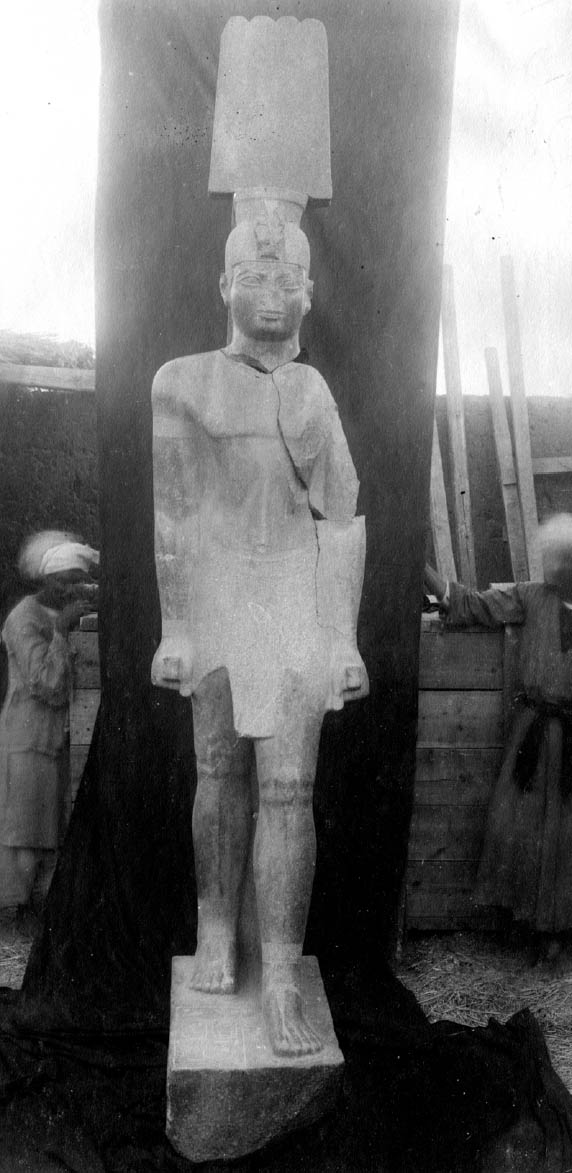THE ANCIENT EGYPTIAN COLLECTION AT THE MUSEUM OF FINE ARTS, BOSTON. PART 1, A REVIEW OF TREATMENTS IN THE FIELD AND THEIR CONSEQUENCESSUSANNE G�NSICKE, PAMELA HATCHFIELD, ABIGAIL HYKIN, MARIE SVOBODA, & C. MEI-AN TSU
4 TRANSPORT AND ARRIVAL AT THE MFAArtifacts from Egypt were shipped to the United States from Alexandria or Port Said, typically routed through Hamburg. Most of the finds from Sudan, where major sites were located within reach of the railway line to Egypt, were transported north, often photographed at Harvard Camp in Giza, and combined there along with the Giza finds. Given the vast number of artifacts that were shipped from Egypt to Boston, it is not surprising that damages occurred during transit. Two of the largest pieces in the collection, the colossal granite (or granitic gneiss) statue of Aspelta (MFA 23.730; fig. 2; Dunham 1970) and the limestone false door of Khufuankh (MFA 21.3081) that stands more than 3.05 meters, were both severely fractured in transit. Insurance claims note that both pieces were valued at
Insurance claims from a later fire on the SS Clan Murdoch in 1920 have provided some insights into packing methods:
Over several decades, substantial shipments of artifacts arrived in Boston, where a new museum building was constructed in 1908, in part customdesigned to accommodate some of the massive stone objects, such as two mastabas from Saqqara that had been in storage since their arrival in 1904 (MFA Bulletin 1905). One can only imagine the logistical complexities, with the excavators spending most of their time in the field and insufficient personnel in Boston. Exhibition and storage exposed the freshly unearthed materials to the substantial environmental variations of New England, as the building was not climate-controlled. |
